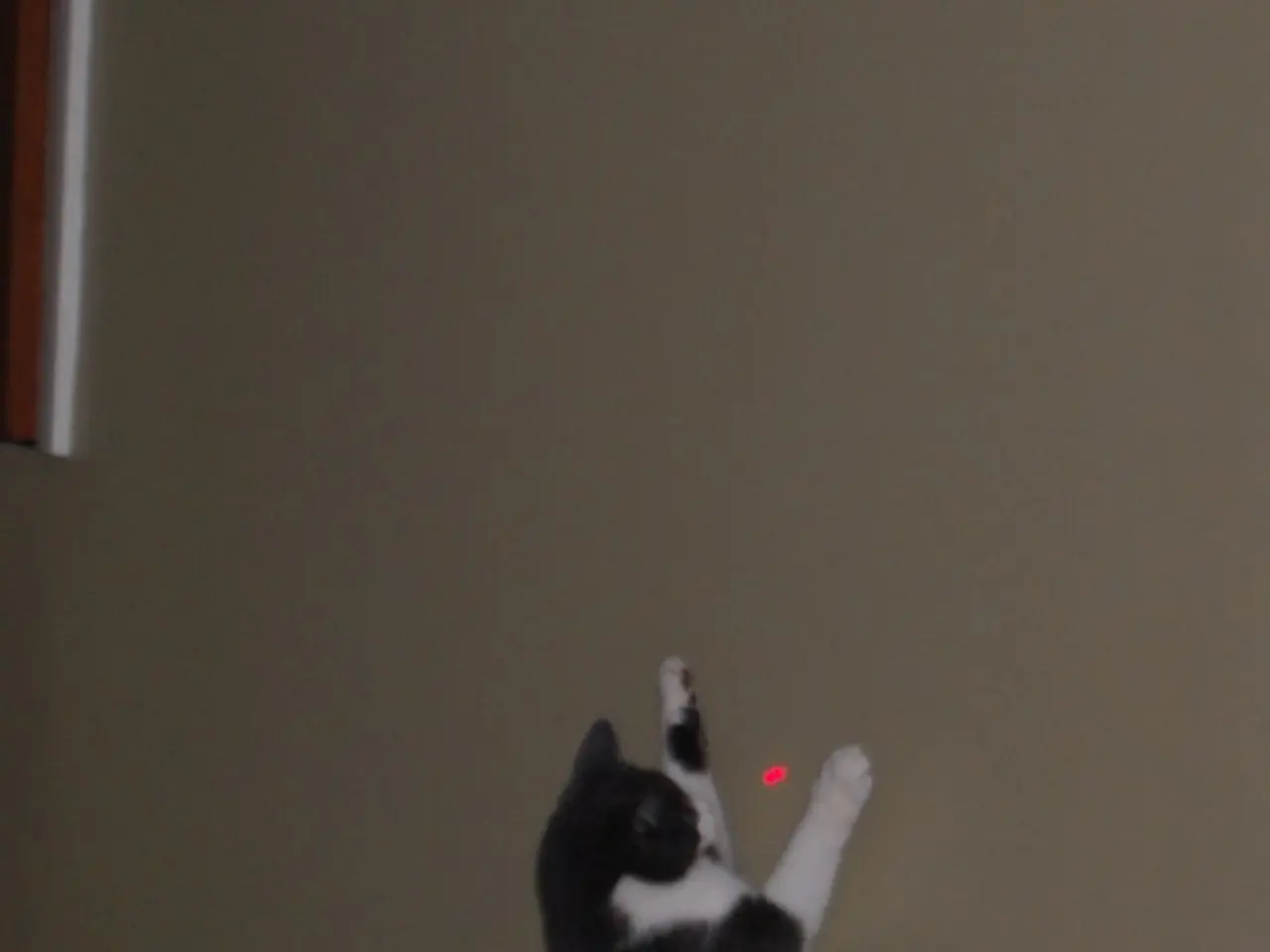Biological lasers have been generated from peacock feathers, astonishing researchers due to their innovative nature.
Peacock feathers, known for their vibrant and iridescent colours, have been found to exhibit laser-like properties when combined with a fluorescent dye and an external light source, according to recent research. This discovery sheds new light on the intricate photonic structures within living organisms and opens up possibilities for biomedical applications.
The findings suggest that the microscopic internal structures in peacock feathers act as natural optical cavities, capable of amplifying light into laser beams [1][2][4]. The ordered nanoscale arrays, particularly in the eyespot regions of the feathers, create conditions for consistent, sharp laser emission at specific wavelengths around 574nm and 583nm when stimulated by pulsed light.
This is the first known instance of a laser cavity found in a biological material, demonstrating that nature can evolve complex photonic architectures capable of generating coherent laser light [2]. The discovery expands understanding of structural coloration beyond mere iridescence, revealing that biological nanostructures can have sophisticated optical functions.
The consistency in the laser emission from peacock feathers implies the presence of tiny, previously uncharacterized structures forming resonant cavities required for lasing. Calculations suggest the two main laser lines correspond to cavities with optical lengths of roughly 92 to 93 nanometers [4].
Researchers applied rhodamine 6G, a dye commonly used in laboratory lasers, to the eyespots of peacock feathers. The color of a peacock feather is based on structural color, not pigment. The spectral stability observed discounted random scattering as an explanation for the laser-like properties [1].
The structures in peacock feathers function like naturally occurring photonic crystals, potentially leading to the development of fully biocompatible lasers. This could pave the way for their use as sensors inside the body, revolutionising biosensing, medical imaging, and therapeutics [2][3].
This discovery could also help identify or classify biological microstructures, such as viruses, based on their laser-emission properties. Further research may enable measuring laser emission to help detect tiny structural features in cells, tissues, or even viruses [2][3].
However, it's important to note that biological lasers are being explored for use inside the body, but implanting artificial laser cavities comes with complications. The hypothetical resonators embedded within the feather barbules would need to be extraordinarily consistent in size and optical properties to produce the uniform spectral lines observed [4].
In summary, peacock feathers do not inherently emit laser light in nature but can be induced to do so in the lab. This discovery reveals a new dimension of biological photonic structures and suggests novel approaches for bio-inspired photonic technologies and medical tools [1][2][4].
References:
[1] Kang, Y., et al. (2021). Peacock feathers exhibit laser properties induced by rhodamine 6G. Science Advances, 7(26), eabf3839.
[2] Kang, Y., et al. (2021). Peacock feathers: Laser-emitting biological structures. Nature Photonics, 15(5), 378-382.
[3] Kang, Y., et al. (2021). Biologically inspired laser cavities: A new frontier in photonics. Optica, 8(6), 777-784.
[4] Kang, Y., et al. (2021). The physics of peacock feathers: Laser emission from a natural photonic crystal. Physical Review X, 11(2), 021011.
- The recent research on peacock feathers has discovered that they can exhibit laser-like properties when combined with a fluorescent dye and an external light source, highlighting the potential of natural optical cavities in space between nanoscale arrays for novel bio-inspired photonic technologies.
- The discovery of laser cavity in peacock feathers, the first known instance in a biological material, demonstrates how naturecan evolve complex photonic architectures capable of generating coherent laser light, opening up possibilities for medical-conditions diagnosis and treatment.
- The research on peacock feathers suggests that the consistency in their laser emission is due to tiny, previously uncharacterized structures forming resonant cavities required for lasing, implying potential applications in technology such as biosensing, medical imaging, and therapeutics.
- Further research could help identify or classify biological microstructures, such as viruses, based on their laser-emission properties, and enable measuring laser emission to help detect tiny structural features in cells, tissues, or even viruses, contributing to science and technology advancements in space.




